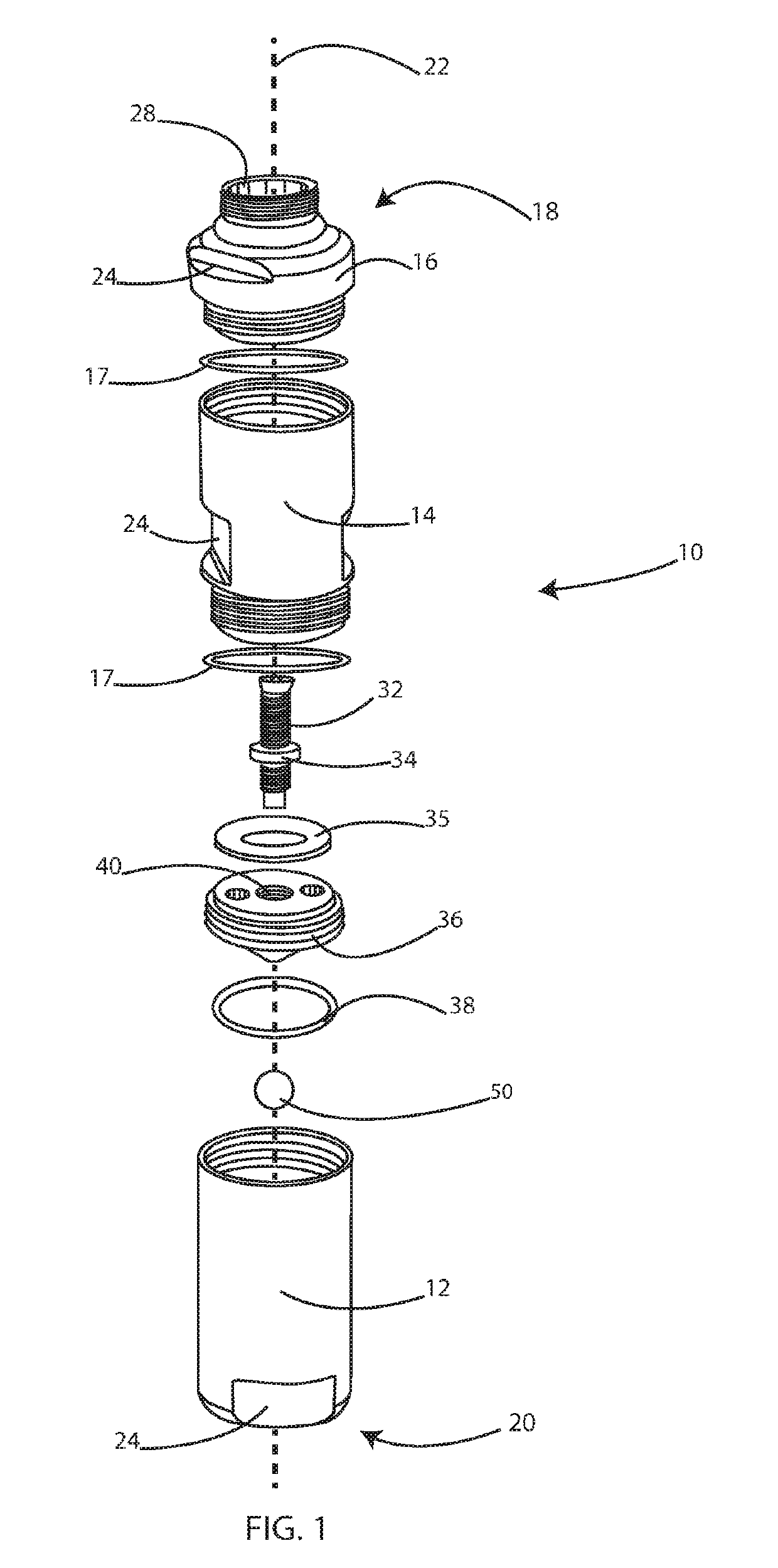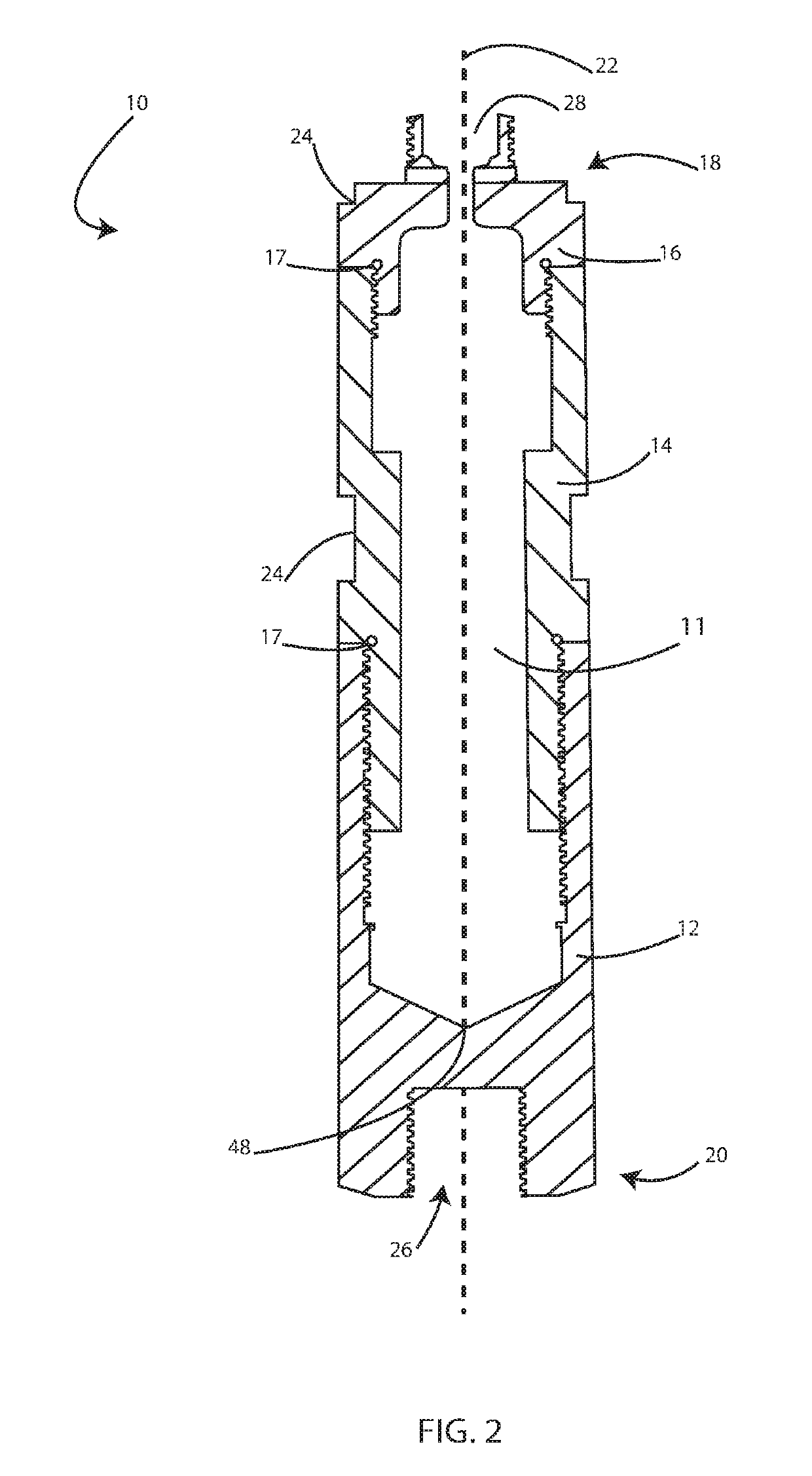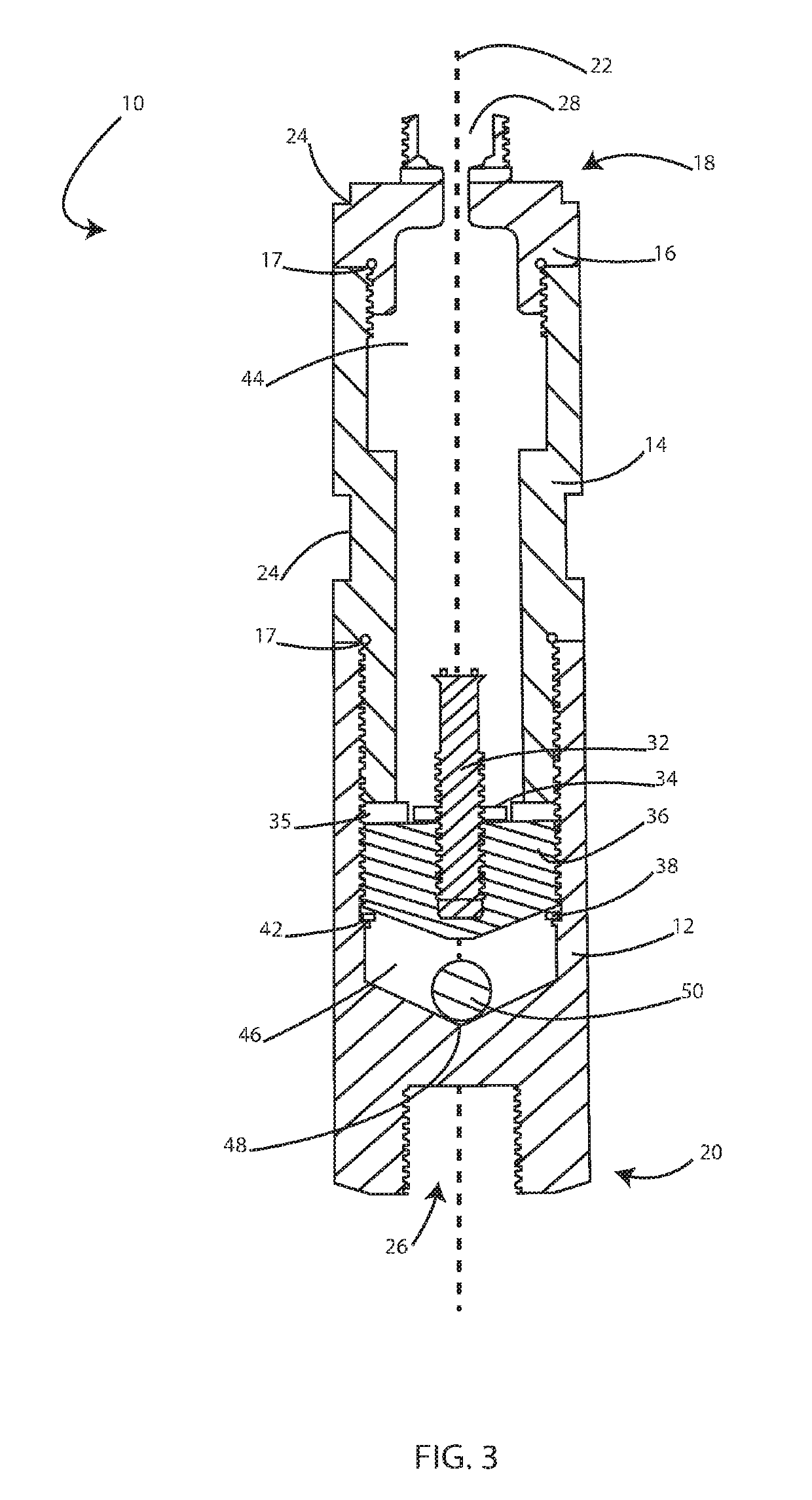Tilt sensor
a tilt sensor and sensor technology, applied in the field of tilt sensors, can solve the problems of increasing the risk of exposure to hazardous materials, inefficient and/or hazardous monitoring using human labor, and the current tilt sensor is problematic, so as to prevent damage to the components, effectively seal the chamber, and avoid the effect of being damaged
- Summary
- Abstract
- Description
- Claims
- Application Information
AI Technical Summary
Benefits of technology
Problems solved by technology
Method used
Image
Examples
Embodiment Construction
[0029]While the presently disclosed inventive concept(s) is susceptible of various modifications and alternative constructions, certain illustrated embodiments thereof have been shown in the drawings and will be described below in detail. It should be understood, however, that there is no intention to limit the inventive concept(s) to the specific form disclosed, but, on the contrary, the presently disclosed and claimed inventive concept(s) is to cover all modifications, alternative constructions, and equivalents falling within the spirit and scope of the inventive concept(s) as defined in the claims.
[0030]FIG. 1 is an exploded view of one embodiment of the tilt sensor 10. In the embodiment shown, the main body of the tilt sensor 10 is constructed of three pieces: a ball carrier 12, a throat 14, and a cap 16. In this embodiment, the three pieces are connected through the use of complementary threading, though other methods of construction will be known to those skilled in the art. T...
PUM
 Login to View More
Login to View More Abstract
Description
Claims
Application Information
 Login to View More
Login to View More - R&D
- Intellectual Property
- Life Sciences
- Materials
- Tech Scout
- Unparalleled Data Quality
- Higher Quality Content
- 60% Fewer Hallucinations
Browse by: Latest US Patents, China's latest patents, Technical Efficacy Thesaurus, Application Domain, Technology Topic, Popular Technical Reports.
© 2025 PatSnap. All rights reserved.Legal|Privacy policy|Modern Slavery Act Transparency Statement|Sitemap|About US| Contact US: help@patsnap.com



